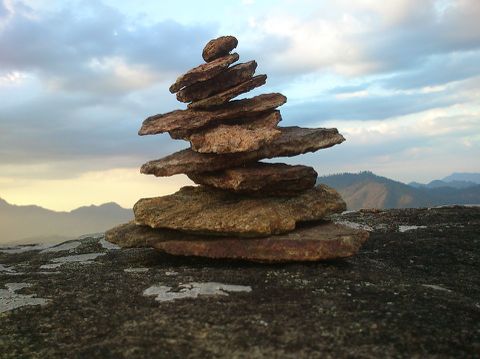Born in the United States in the late 1960s in reaction to the established order, museum institutions, the mercantile and elitist character of art, Land art refers to all artistic currents that use Nature as a place, a material and an inscription surface for their work.

There are generally two types of artistic interventions:
-large inscriptions at the scale of the landscape. Like the geoglyphs of Nazca, the pioneers of Land Art such as Robert Smithson realized in the American desert west "earthworks" or monumental excavations inscribed in the landscape;
- human scale works made from natural materials (earth, stones, mud, branches, ...).
While the former are destined to last, even if they are eroded by the elements, the latter are destined to be ephemeral by degrading or decomposing themselves naturally.
Since these artistic enterprises are made in inaccessible places, the photographic support has become indispensable, attesting or being part of the work.

In many respects, Land Art has taken the opposite view of the traditional forms of art:
- the original work was no longer realized in a workshop, no longer transportable or exposable and could not be held. It was carried out in situ, far from public view.
- the work was no longer a representation of the Nature, but part of the Nature. It was no longer definitive, evolving with climatic conditions and natural hazards.
-the work and its creator were no longer eternal.
For nearly fifty years, Land Art has undergone many changes that have challenged some of its initial claims.
It has become transposable and exposable. It has re-entered the museum space through facilities (South Bank circle of Richard Long for example) and has joined the largest private collections. It has experienced various extensions such as plant art or "art in nature", « earth art » or « ecological art ».
Thanks to Land Art, nature and art, originally a human attempt to imitate or transcend natural creation, have finally been reconciled.
Given the present boom in green art, these natural art works are destined to meet more and more success.
Article proposed by:



 Nicolas Sarazin
Nicolas Sarazin